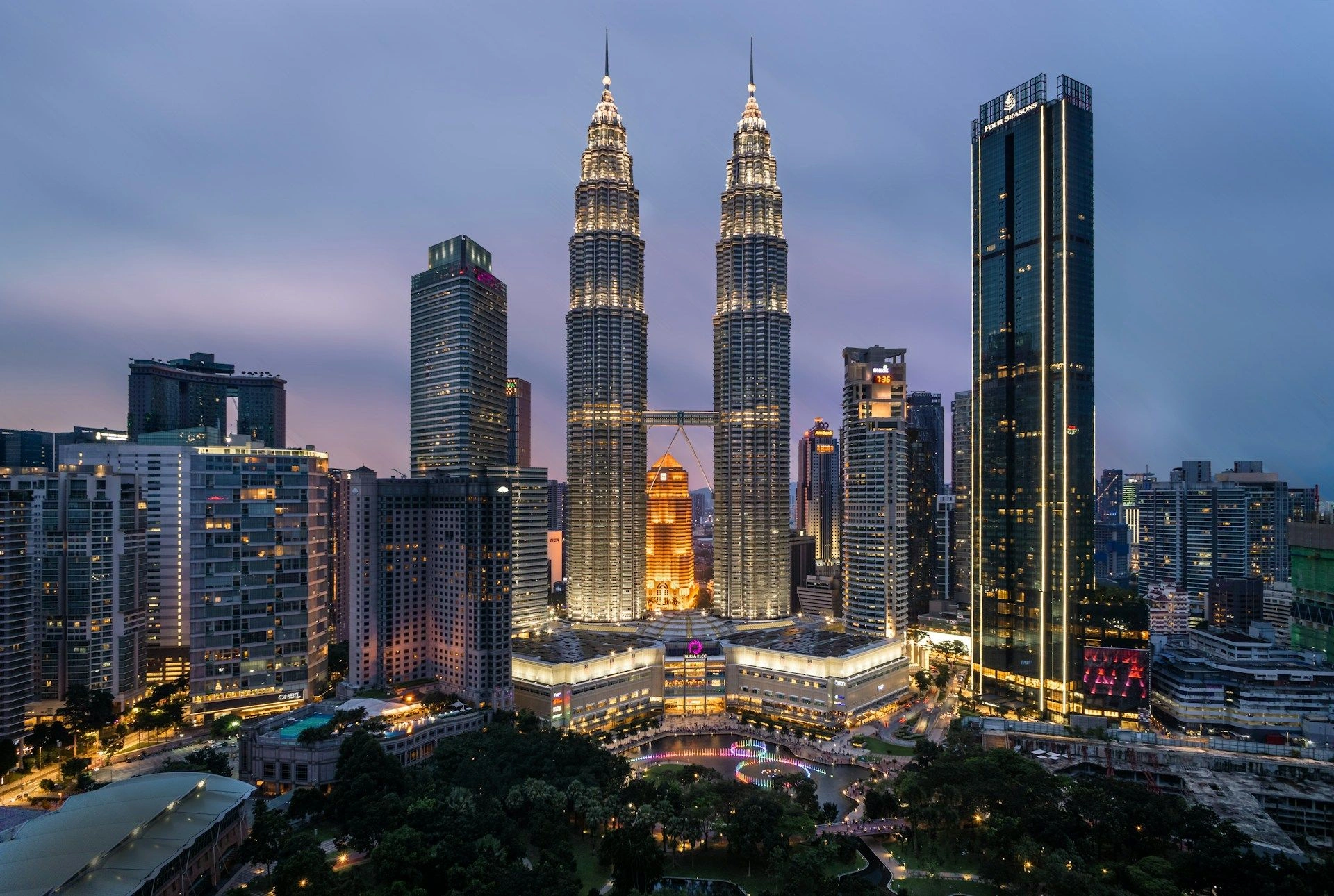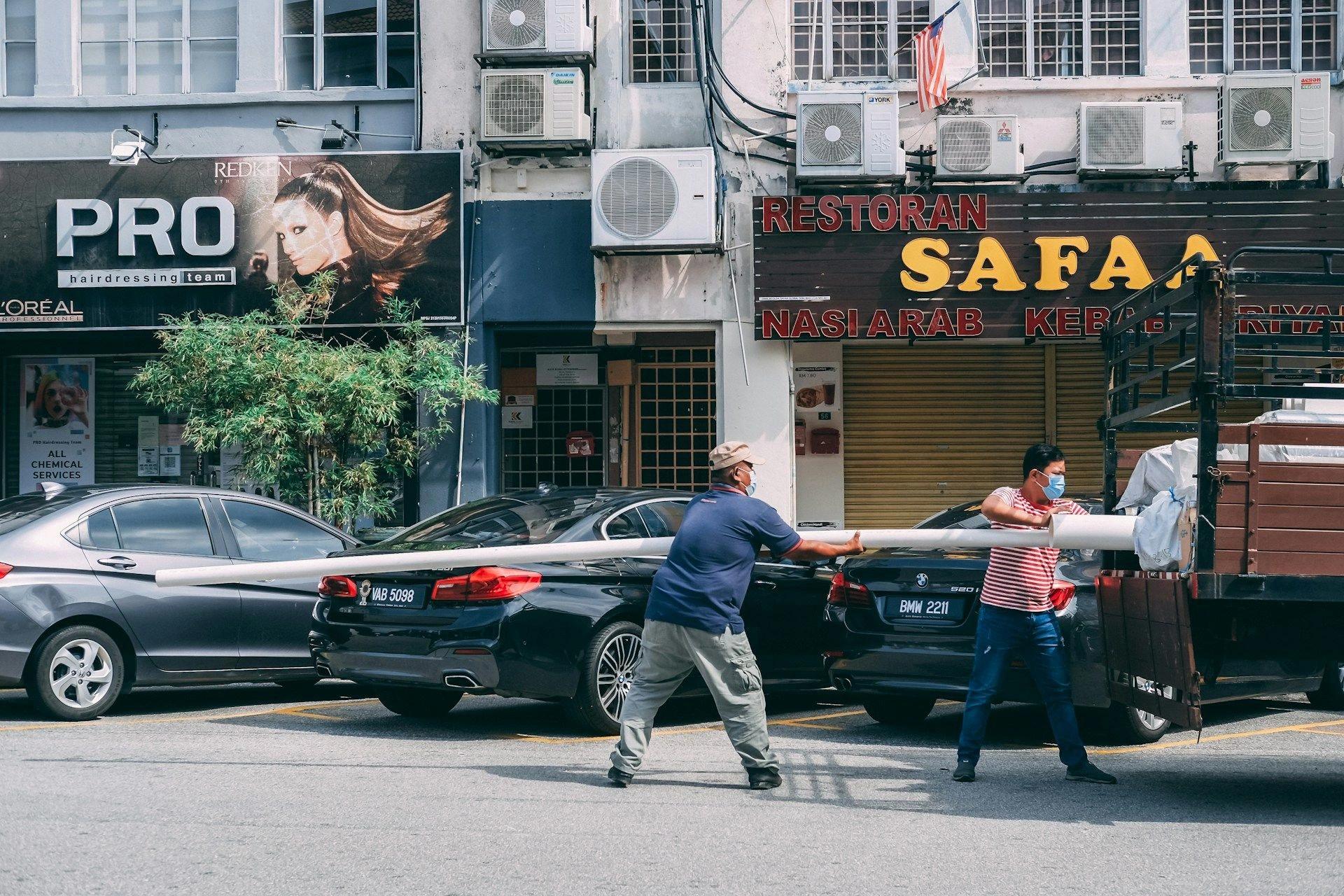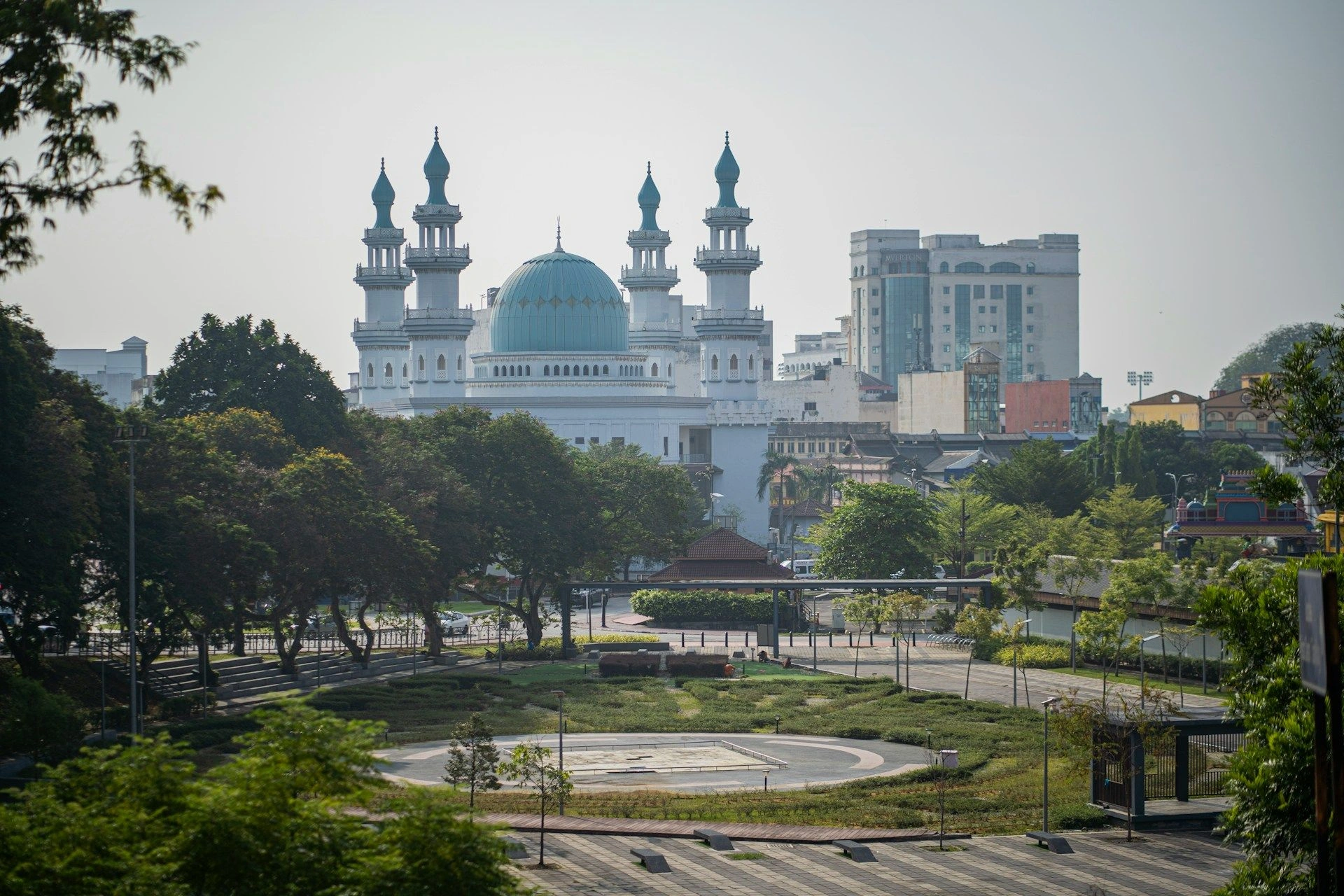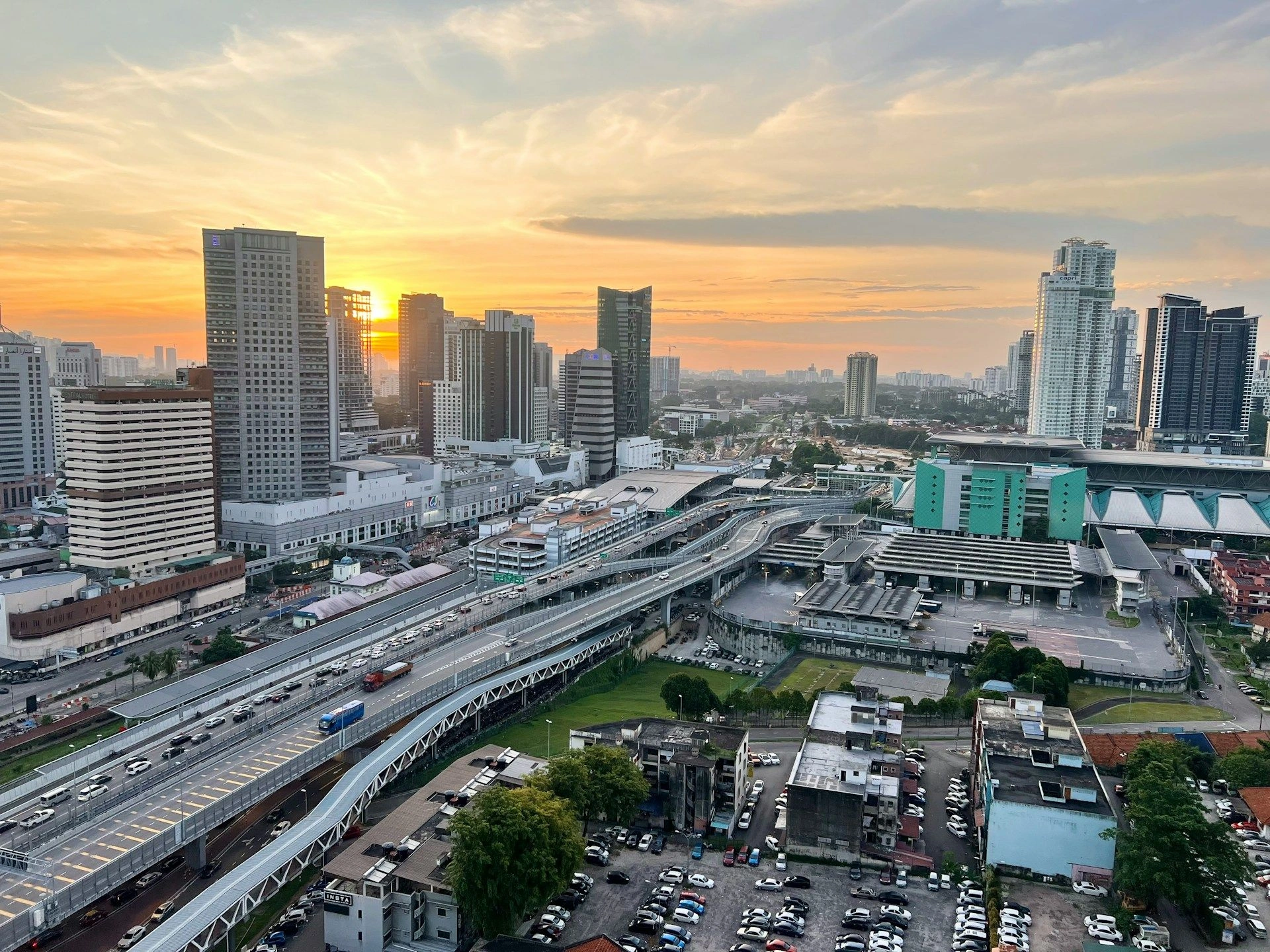Popular
cities and regions in Malaysia
Advantages of traveling
to Malaysia
Rainforest Expeditions
Explore UNESCO-protected Taman Negara with guided canopy walks, river safaris spotting proboscis monkeys and hornbills, and overnight stays in stilted jungle chalets—immersive travel experiences in Malaysia’s ancient ecosystems.
Island & Beach Escapes
Relax on Langkawi’s white sands, snorkel vibrant reefs at Perhentian Islands, or kayak through limestone karsts in Penang’s coastal bays—best tours in Malaysia blend relaxation, marine adventure, and coastal culture.
Cultural & Culinary Journeys
Wander George Town’s street-art alleys, visit Batu Caves’ Hindu shrines, and sample Nasi Lemak and Char Kway Teow at night markets in Kuala Lumpur—how to visit Malaysia for authentic local flavour.
Rainforest Expeditions
Explore UNESCO-protected Taman Negara with guided canopy walks, river safaris spotting proboscis monkeys and hornbills, and overnight stays in stilted jungle chalets—immersive travel experiences in Malaysia’s ancient ecosystems.
Island & Beach Escapes
Relax on Langkawi’s white sands, snorkel vibrant reefs at Perhentian Islands, or kayak through limestone karsts in Penang’s coastal bays—best tours in Malaysia blend relaxation, marine adventure, and coastal culture.
Cultural & Culinary Journeys
Wander George Town’s street-art alleys, visit Batu Caves’ Hindu shrines, and sample Nasi Lemak and Char Kway Teow at night markets in Kuala Lumpur—how to visit Malaysia for authentic local flavour.

Useful articles
and recommendations from experts
Tourism in Malaysia: A Complete Guide
Tourism in Malaysia offers a captivating blend of island paradises, mist-covered rainforests, dynamic cities, and centuries-old cultural traditions. Travel experiences in Malaysia range from sunrise treks up Mount Kinabalu to sunset cruises around the UNESCO-listed Langkawi archipelago, from sampling street-food hawker fare in Kuala Lumpur to relaxing at thermal beach resorts on Penang’s coast. Compact air and rail networks—linking Kuala Lumpur, Penang, Kota Kinabalu, and Johor Bahru—combined with a modern highway system make how to visit Malaysia both flexible and efficient. Whether you seek rainforest immersion, heritage exploration, culinary discovery, or island relaxation, this guide outlines the best tours in Malaysia, practical logistics, insider tips, seasonal rhythms, and tailored recommendations to help you craft an unforgettable Malaysian itinerary.
Why Malaysia is Attractive for Travelers
Malaysia’s unique appeal lies in its remarkable diversity: two distinct landmasses separated by the South China Sea—Peninsular Malaysia and Malaysian Borneo—each offering distinct ecosystems, cultures, and adventure styles. Heritage cities like George Town (a UNESCO World Heritage site) showcase British colonial architecture alongside Chinese clan houses and Malay kampung enclaves. In Kuala Lumpur, the gleaming Petronas Twin Towers and bustling Bukit Bintang district contrast with centuries-old mosques and temples scattered across the city. Malaysia’s culinary traditions reflect this pluralism: Malay spicy laksa, Chinese dim sum variations, and Indian roti canai coexist in vibrant hawker centres. Nature lovers flock to Sabah and Sarawak for orangutan sanctuaries, canopy treks in Danum Valley, and cave systems in Gunung Mulu National Park, while the Cameron Highlands provide cool-climate tea estates and strawberry farms at nearly 2,000 metres above sea level. Coastal escapes on Perhentian and Tioman Islands lure divers to colorful coral gardens, while eco-lodges in Taman Negara permit multi-day jungle safaris. This interplay of natural wonders, modern amenities, and living traditions explains why tourism in Malaysia has become a favorite for families, adventure seekers, and cultural explorers alike.
Main Types of Tourism in Malaysia
Malaysia supports a broad spectrum of travel styles, each anchored by world-class offerings:
Cultural & Heritage Tourism features walking tours of Malacca’s Portuguese-Dutch-British quarters, guided temple visits in Ipoh, and Malay village homestays in the rural heartland. Best tours in Malaysia include cooking classes with local families and storytelling sessions about Orang Asli traditions.
Eco-Adventure Tourism unfolds in Peninsular and Bornean rainforests: canopy walks in Taman Negara, paddle expeditions through Kinabatangan River’s wildlife corridors, and pristine jungle hikes in Crocker Range. Birdwatchers track hornbills in lowland forests, while kayakers explore mangrove estuaries in Langkawi Geopark.
Island & Beach Tourism capitalizes on sun-kissed shores: snorkel in Perhentian’s calm waters, dive at Sipadan’s renowned sites, or charter a private yacht around Langkawi’s 99 islands. Beach resorts offer spa treatments using local botanicals and beachfront dining under starlit skies.
Adventure Sports Tourism encompasses white-water rafting in Gopeng’s Kampar River, paragliding over Bukit Jugra near Kuala Lumpur, and caving expeditions in Gua Tempurung. Extreme sports operators in Sabah run mountain-biking and white-water kayaking programmes.
Wellness & Spa Tourism leverages cool-climate retreats in Cameron Highlands and beachfront wellness sanctuaries in Kota Kinabalu. Traditional Malay massage (urut Melayu), Eastern herbal therapies, and modern hydrotherapy at luxury resorts rejuvenate visitors.
Urban & Culinary Tourism thrives in Kuala Lumpur and Penang: street-food tours at Jalan Alor, Michelin-starred fusion restaurants, and night-market crawls at Jonker Street. Food-lovers savour kampung-style nasi kandar and Peranakan laksa while exploring emerging craft-beer scenes.
Unique Attractions and Experiences
Malaysia’s hidden gems enrich any itinerary. In Borneo, Matang Wildlife Centre in Kuching rehabilitates endangered sun bears and orangutans, offering behind-the-scenes conservation talks. The Authentic Kampung in Negeri Sembilan recreates Minangkabau longhouses with homestays and rice-planting demos. At the Batu Caves, Tamil festival Thaipusam sees devotees carry ornate kavadi burdens up 272 limestone steps. The UNESCO Kinabalu Park hosts the Rafflesia bloom—the world’s largest flower—briefly appearing on rainforest floors. In Sabah, the Padas River’s gorges host the annual world-class Padas white-water race, while the Danum Valley Field Centre invites scientific treks into untouched lowland dipterocarp forest. The Kuching Waterfront’s colonial promenade gives way to the Sarawak Cultural Village, where Iban, Bidayuh, and Orang Ulu day-long performances illustrate tribal heritage. These distinctive travel experiences in Malaysia ensure every visit reveals unexpected facets of a multifaceted nation.
Practical Tips for Travelers
When planning how to visit Malaysia, keep these Malaysia travel tips in mind. Visas & Entry: Citizens of many countries enjoy visa-free stays up to 90 days; others may obtain e-Visas online in advance. Currency & Payments: The Malaysian ringgit (MYR) is widely accepted; credit cards work in cities and major resorts, but carry cash for rural markets and small boat operators. Language: Malay is official, but English is widely spoken in urban and tourist areas; basic Malay greetings (“Selamat pagi” for good morning, “Terima kasih” for thank you) are appreciated. Transport: Airlines such as Malaysia Airlines and AirAsia link Kuala Lumpur to regional hubs and Borneo’s cities. The KTM ETS high-speed train serves Penang and Ipoh. Ride-hailing apps (Grab) operate nationwide; buses and ferries connect islands. Health & Safety: Tap water is treated in major cities but bottled water is recommended in rural areas. Dengue fever precautions—mosquito repellent and netting—are advised. Road travel in mountainous areas requires caution; always check weather forecasts for flood risks during monsoon season. Etiquette: Dress modestly when visiting religious sites—cover shoulders and knees—and remove shoes before entering temples, mosques, and homes. Tipping is not mandatory but small gratuities (5–10%) are welcomed in restaurants and for guides. By following these practical tips, travelers ensure respectful, comfortable, and seamless tourism in Malaysia.
Seasonal Demand and Visitor Flows
Malaysia’s equatorial climate yields two monsoon seasons, shaping visitor patterns. West Coast High Season: December–February are ideal for Peninsular beaches (Langkawi, Penang) with minimal rain and calm seas. East Coast High Season: March–October favor Perhentian and Tioman Islands; monsoon season there runs November–February, when many resorts close. Shoulder Seasons: April–May and September–October offer fewer crowds and discounted rates, though sporadic showers may occur. Low Season: During monsoons, inland and Borneo-based tours (Sabah, Sarawak) remain operational, with lower rates and fewer tourists. Major festivals—Hari Raya Aidilfitri, Chinese New Year, and Deepavali—draw domestic travelers, increasing demand in cities; for quieter visits, avoid these peak travel dates. Aligning your trip with these seasonal windows and best tours in Malaysia ensures optimal weather, availability, and value.
Travel Planning Recommendations
To design an efficient Malaysian itinerary, integrate these travel planning recommendations:
- Days 1–2 (Kuala Lumpur & Batu Caves): Visit Petronas Twin Towers, explore Bukit Bintang street-food markets, then take a half-day trip to Batu Caves for Hindu temple rituals and cave tours.
- Days 3–4 (Penang & Ipoh): Fly or train to Penang; wander George Town’s UNESCO streets, sample hawker favourites at Gurney Drive, and ride the funicular up Penang Hill. Overnight in Ipoh to explore cave temples and colonial mansions.
- Days 5–6 (Cameron Highlands): Drive to the highlands for tea-estate tours, strawberry farms and Mossy Forest canopy walks; evening market visits in Brinchang.
- Days 7–9 (Taman Negara & Cameron Highlands): Overland to Taman Negara for river safaris, canopy walkway, and night jungle walks; combine with a homestay in an Orang Asli village.
- Days 10–12 (Sabah & Kinabalu Park): Fly to Kota Kinabalu; ascend Mount Kinabalu or explore Kinabalu Park’s botanical diversity, then river cruise on the Kinabatangan for wildlife spotting.
- Optional island extension: Add 3–4 days on Perhentian or Langkawi for snorkeling, diving, and beach relaxation.
Book domestic flights, rainforest treks, and island-resort stays two to three months in advance for high-season travel experiences in Malaysia. Reserve park permits for Mount Kinabalu climbs and canopy-walk slots. Purchase a local SIM card on arrival for data and navigation. Pack lightweight, quick-dry clothing, sturdy hiking boots, reef-safe sunscreen, and insect repellent. Download offline maps (Maps.me) and the Grab app for ride-hailing. Secure travel insurance covering adventure activities such as jungle trekking and water sports. By following these strategies on how to visit Malaysia, you’ll ensure a seamless, enriching, and truly memorable journey across this Southeast Asian gem.





